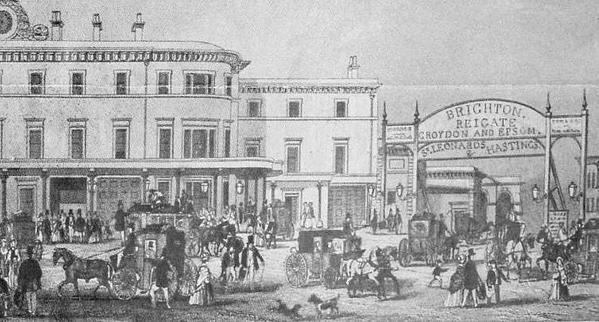[quote=genesis]Hyde Park is about two miles long and Kensington Palace is on the opposite side from Hyde Park Corner. You physically cannot see the Palace from Hyde Park corner, both because of the distance but also because the park is not a field. There are trees etc in the way (also: "the general lack of trees these days" are you referring to 2017? There are plenty of trees.). And that’s assuming you are at Hyde Park Corner - any further along actual Piccadilly and you also have manor houses in the way of the line of sight.
Anyway, all I was saying was that specific snippet cannot be taken literally. Lusitania Row is Piccadilly as far as I am concerned, just not due to the alleged proximity to the Shuttered Palace.[/quote]
I think it can.
First, as you yourself pointed out, the Bazaar twisted London’s map in an undescribed fashion. We have no reason to assume that Lusitania Row is as straight as Piccadilly, nor that Jekyll Gardens is quite so large as Hyde Park. All estimates based on the geography of Surface London are by nature nothing more than educated guesses.
Second, as to distance, from the front door of Kensington Palace to the Wellington Arch (which is as close to the end of Piccadilly as no matter) is slightly over one mile as the bat flies, if one can trust satellite imagery. One mile, or two or three or four, is easily within visual distance, given good conditions and unobstructed ground. The elevated level of most Palace apartments works in one’s favor.
Third, as to obstructions, I was referring to trees in 1895. We have ample evidence that most of London’s trees were lost after the Fall, leaving those that weren’t cleared for firewood or building material as mere leafless skeletons. Leafless skeletons do a poor job of blocking vision, especially from an elevated position; this is amply demonstrable at this time of year. Furthermore, the change from "Hyde Park" to "Jekyll Garden" implies considerably fewer trees; one can have whole copses in a park, but a garden is generally open.
Fourth, as to good conditions, the tree-murdering darkness precludes normal vision. However, London is amply provided with gaslight, and artificial light, naturally, shines brightest in darkness. In a normal night without dust, fog, or precipitation, a flashlight or campfire can be seen for miles; in the utter darkness of the Neath, an observer on one of the city’s high points (St. Fiacre’s, the Observatory, and certainly the Bazaar’s Spires) should be able to make out with a spyglass any point in greater London.
Thus we can conclude that, without significant tree cover to block the way, not just Hyde Corner but most all of Piccadilly is within visual range of the Shuttered Palace. The only insoluble factor is building height. Sufficiently tall constructions will, of course, blot out anything, and the buildings on the Hyde end of Piccadilly are six or seven stories tall, that is to say, several stories taller than Kensington Palace. When were these built? I don’t know, although the architectural survey of London is available online if anyone’s more curious and has more free time than I. Even if they were around when London fell, did they survive the Fall? Uncertain. Since the only complicating factor is basically up to Failbetter, I think it’s fair to trust them when they say that you can see Lusitania Row from the Palace.
(Besides, even if all those buildings are still there, I think seeing building fronting Lusitania Row counts as seeing Lusitania Row.)
Unless of course we’ve all been mistaken this whole time and the Shuttered Palace is Buckingham or St. James’s, both of which would have much better views of Piccadilly. I don’t think that’s possible, however.
edited by Siankan on 12/5/2017
